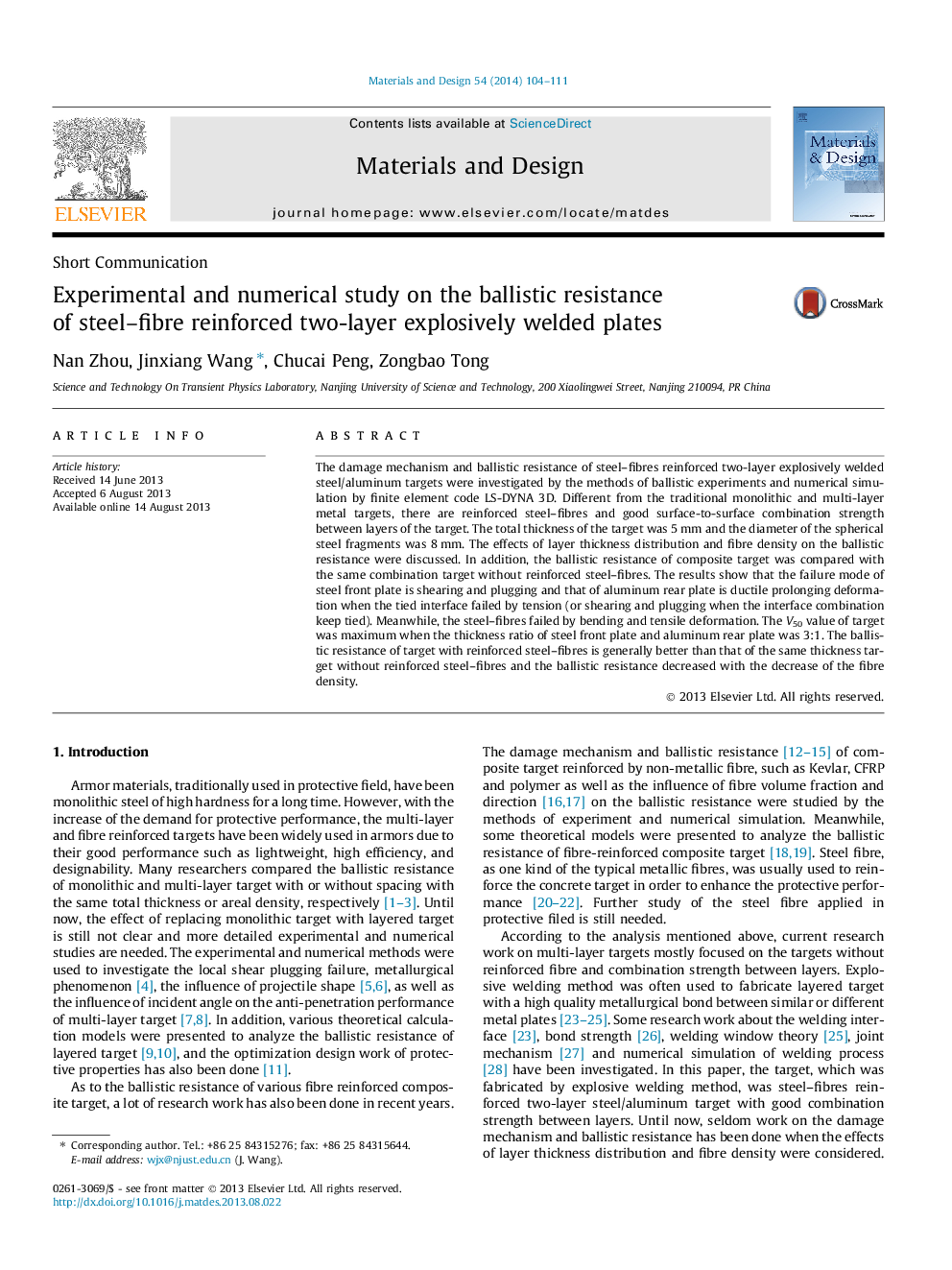| کد مقاله | کد نشریه | سال انتشار | مقاله انگلیسی | نسخه تمام متن |
|---|---|---|---|---|
| 829617 | 1470343 | 2014 | 8 صفحه PDF | دانلود رایگان |
• The steel-fibres reinforced target has good combination between layers.
• The effects of layer thickness distribution and fibre density were considered..
• The optimized thickness distribution of the plates is given about 3:1.
• The reinforced steel-fibres are beneficial for the ballistic resistance of target.
• The ballistic resistance decreased with the decrease of the fibre density.
The damage mechanism and ballistic resistance of steel–fibres reinforced two-layer explosively welded steel/aluminum targets were investigated by the methods of ballistic experiments and numerical simulation by finite element code LS-DYNA 3D. Different from the traditional monolithic and multi-layer metal targets, there are reinforced steel–fibres and good surface-to-surface combination strength between layers of the target. The total thickness of the target was 5 mm and the diameter of the spherical steel fragments was 8 mm. The effects of layer thickness distribution and fibre density on the ballistic resistance were discussed. In addition, the ballistic resistance of composite target was compared with the same combination target without reinforced steel–fibres. The results show that the failure mode of steel front plate is shearing and plugging and that of aluminum rear plate is ductile prolonging deformation when the tied interface failed by tension (or shearing and plugging when the interface combination keep tied). Meanwhile, the steel–fibres failed by bending and tensile deformation. The V50 value of target was maximum when the thickness ratio of steel front plate and aluminum rear plate was 3:1. The ballistic resistance of target with reinforced steel–fibres is generally better than that of the same thickness target without reinforced steel–fibres and the ballistic resistance decreased with the decrease of the fibre density.
Journal: Materials & Design (1980-2015) - Volume 54, February 2014, Pages 104–111
